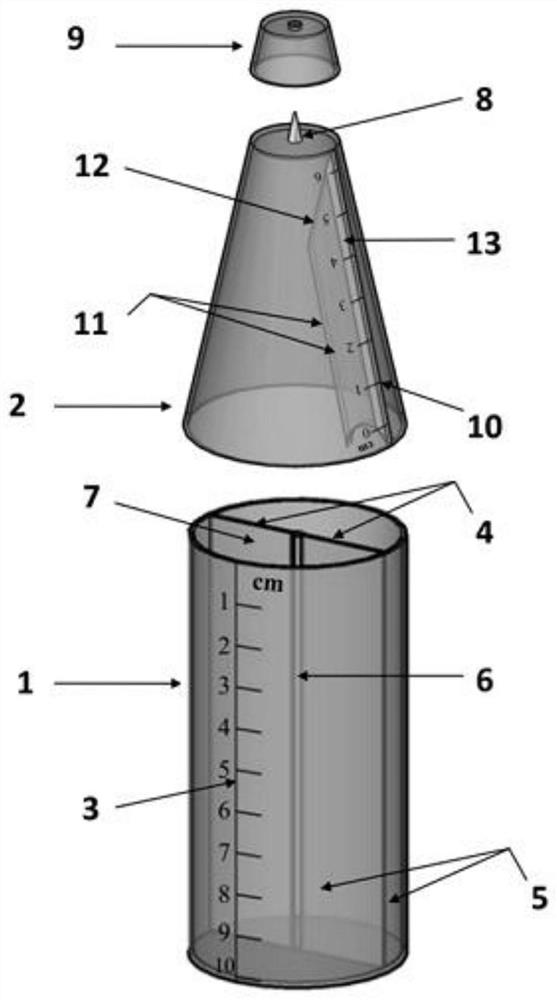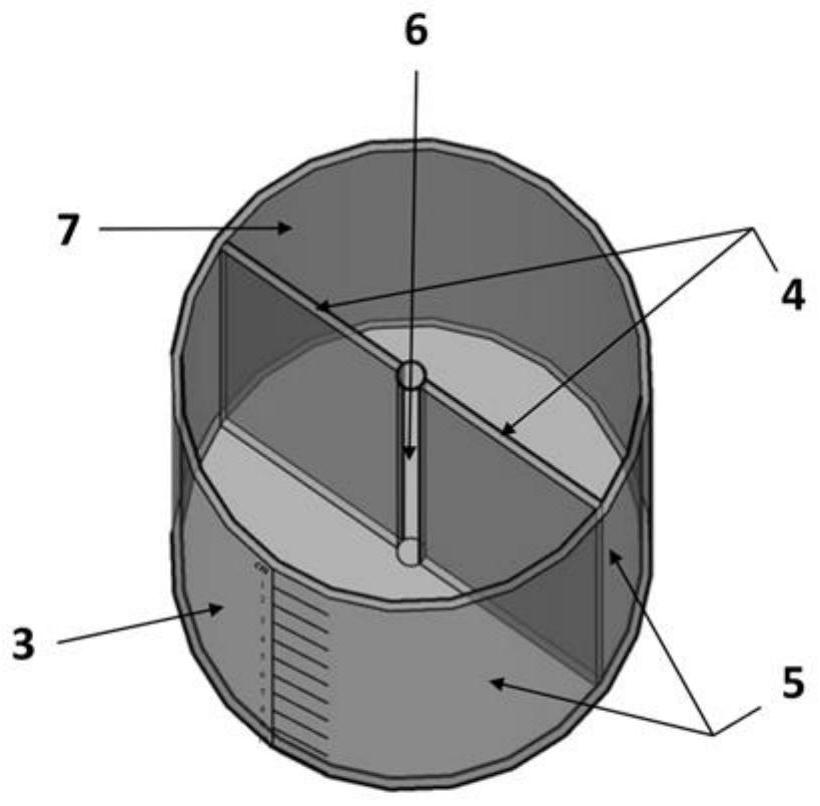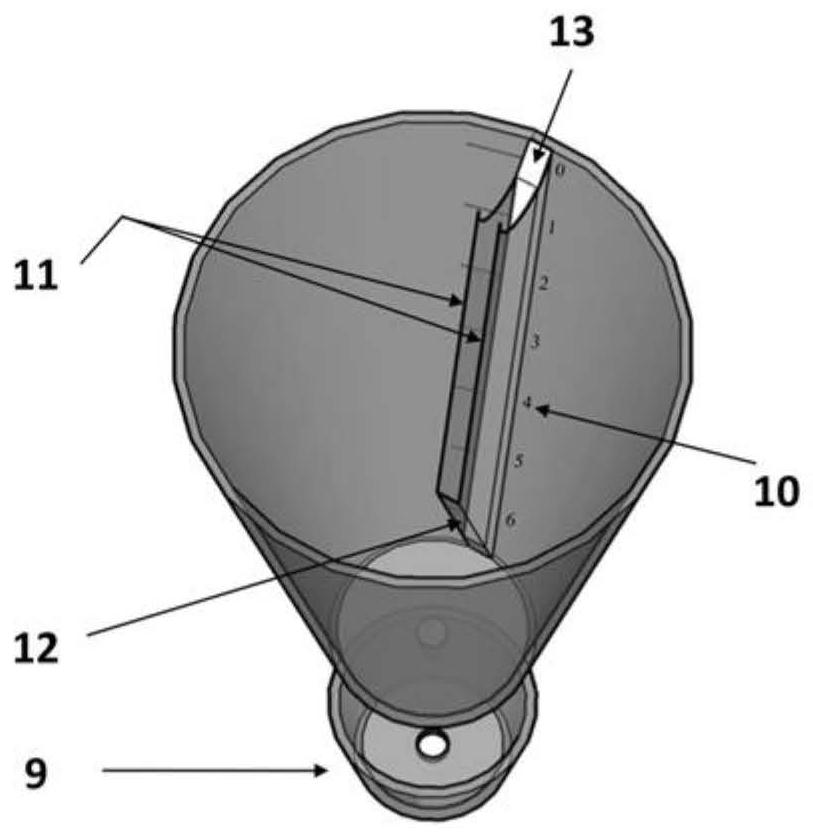Plant root toxicology research device and toxicology research method
A toxicology and root technology, applied in the field of toxicology research, can solve problems such as difficult operation, complex structure, and low efficiency, and achieve the effects of reducing experimental consumables, improving experimental efficiency, and reducing experimental risks
- Summary
- Abstract
- Description
- Claims
- Application Information
AI Technical Summary
Problems solved by technology
Method used
Image
Examples
Embodiment 1
[0145] A device for toxicological research on plant roots is provided in this embodiment, including a detachably connected toxicological test chamber and a cultivation chamber, such as figure 1 As shown, the toxicology test is carried out by placing the culture chamber above the toxicology test chamber, wherein the toxicology test chamber includes a body 1 with an open cylindrical structure, and the culture chamber includes a shell 2 with a circular frustum structure.
[0146] Such as figure 2 As shown, the diameter of the body 1 is 50mm, and the height is 100mm. The body 1 is provided with two identical first partitions 4 with a thickness of 1 mm. The first partitions 4 divide the body 1 into a first chamber and a second chamber. The joints of the two first partitions 4 form a test Sample cavity6. The end of the first partition 4 away from the sample chamber 6 is seamlessly connected with the inner wall of the body 1 , and a sealing film 7 is provided at the opening of the...
Embodiment 2
[0150] A device for toxicological research on plant roots is provided in this embodiment, including a detachably connected toxicological testing chamber and a cultivation chamber, and placing the cultivation chamber above the toxicological testing chamber for toxicological testing, wherein the toxicological testing chamber The body 1 includes an open cylindrical structure, and the culture chamber includes a shell 2 with a circular frustum structure.
[0151] The diameter of the body 1 is 40mm and the height is 90mm. Two identical first partitions 4 with a thickness of 0.7 mm are arranged in the body 1, and the first partition 4 divides the body 1 into a first chamber and a second chamber, and the junction of the two first partitions 4 forms a Sample chamber6. A sealing film 7 is provided at the opening of the body 1 . A hollow cylinder detachably fixed to the bottom of the main body 1 is arranged in the sample cavity 6 . The hollow cylinder has a diameter of 2.5 mm and a he...
Embodiment 3
[0155] A device for toxicological research on plant roots is provided in this embodiment, including a detachably connected toxicological testing chamber and a cultivation chamber, and placing the cultivation chamber above the toxicological testing chamber for toxicological testing, wherein the toxicological testing chamber The body 1 includes an open cylindrical structure, and the culture chamber includes a shell 2 with a circular frustum structure.
[0156] The diameter of the body 1 is 60mm and the height is 150mm. Two identical first partitions 4 with a thickness of 1.2mm are arranged in the body 1, and the first partition 4 divides the body 1 into a first chamber and a second chamber, and the junction of the two first partitions 4 forms a Sample chamber6. A sealing film 7 is provided at the opening of the body 1 . A hollow cylinder detachably fixed to the bottom of the main body 1 is arranged in the sample cavity 6 . The hollow cylinder has a diameter of 4mm and a heigh...
PUM
| Property | Measurement | Unit |
|---|---|---|
| Angle | aaaaa | aaaaa |
| Diameter | aaaaa | aaaaa |
| Height | aaaaa | aaaaa |
Abstract
Description
Claims
Application Information
 Login to View More
Login to View More - R&D
- Intellectual Property
- Life Sciences
- Materials
- Tech Scout
- Unparalleled Data Quality
- Higher Quality Content
- 60% Fewer Hallucinations
Browse by: Latest US Patents, China's latest patents, Technical Efficacy Thesaurus, Application Domain, Technology Topic, Popular Technical Reports.
© 2025 PatSnap. All rights reserved.Legal|Privacy policy|Modern Slavery Act Transparency Statement|Sitemap|About US| Contact US: help@patsnap.com



